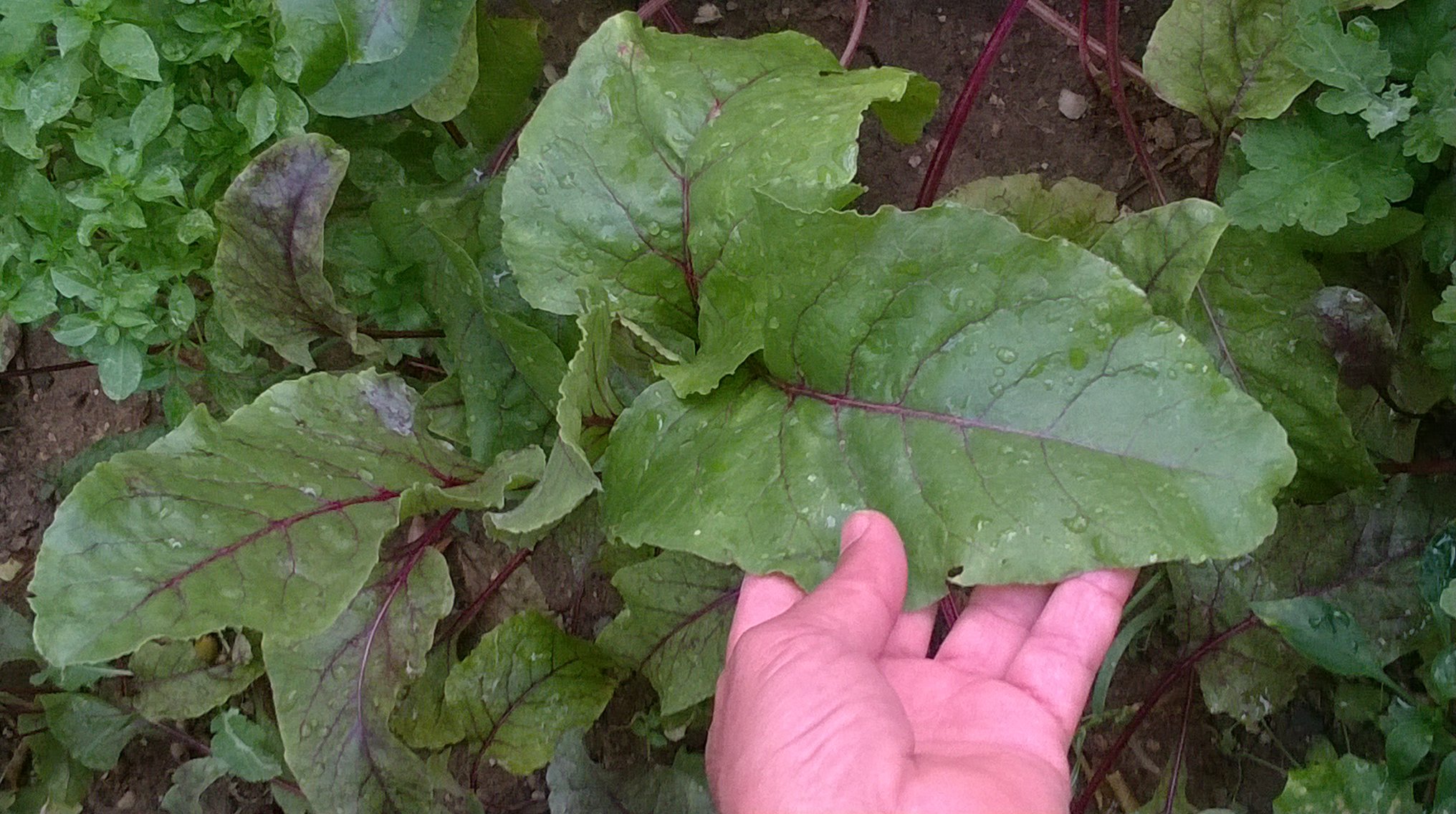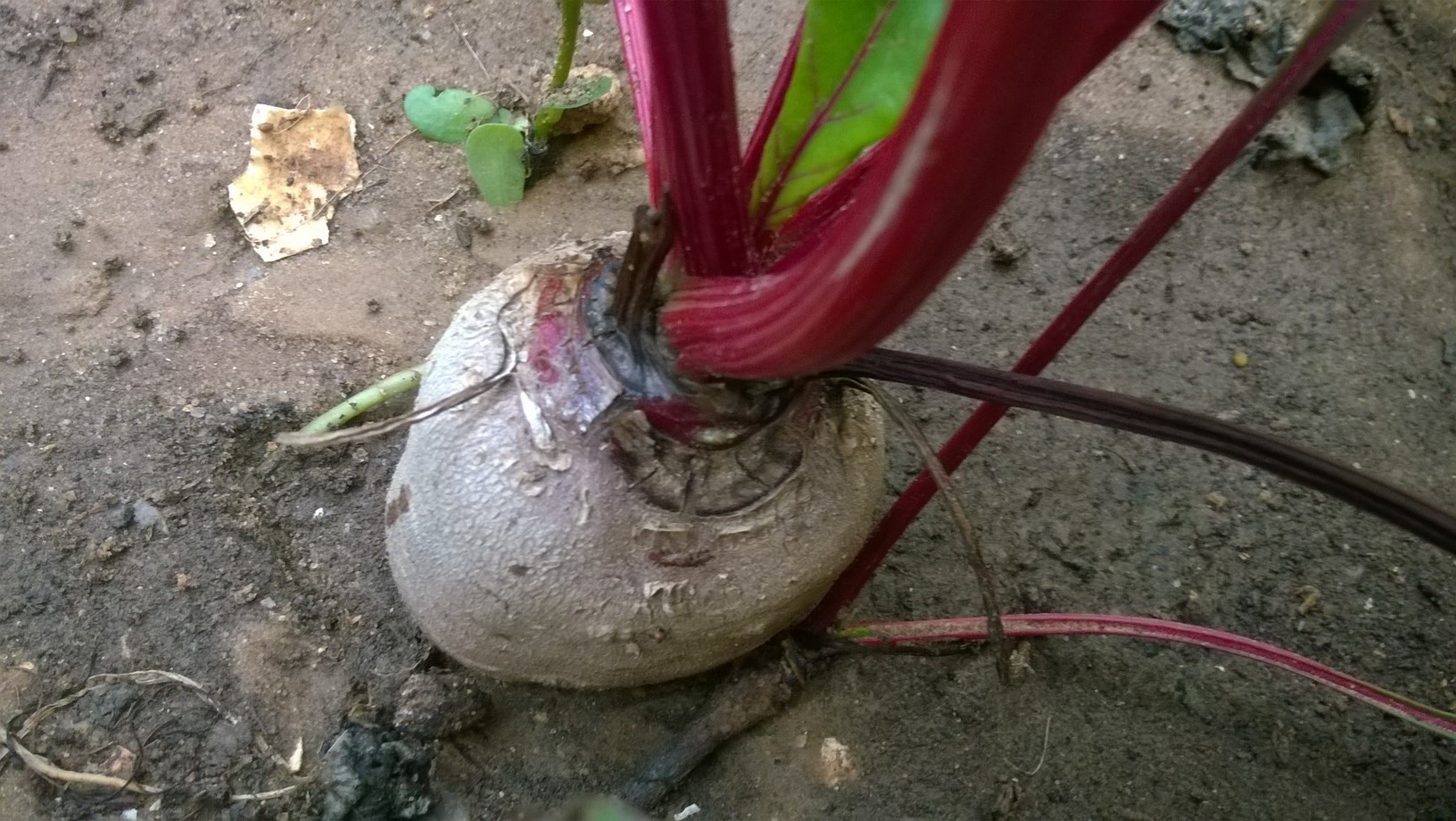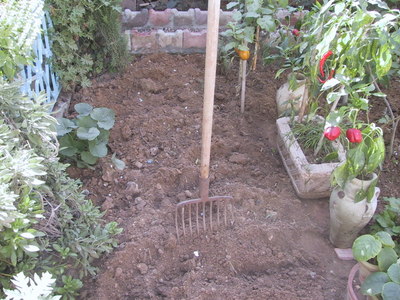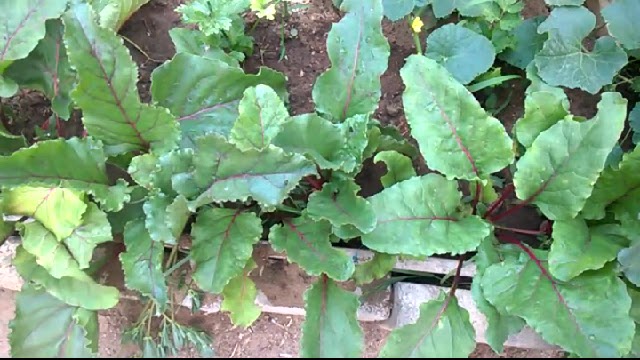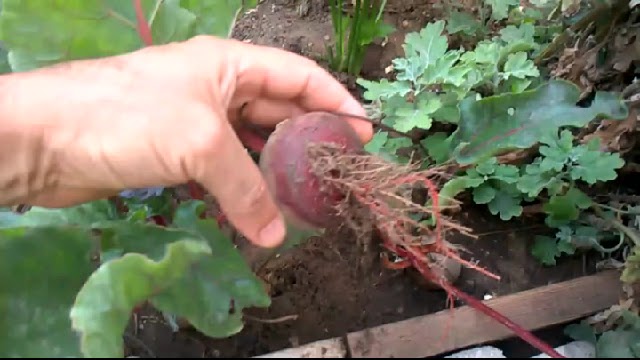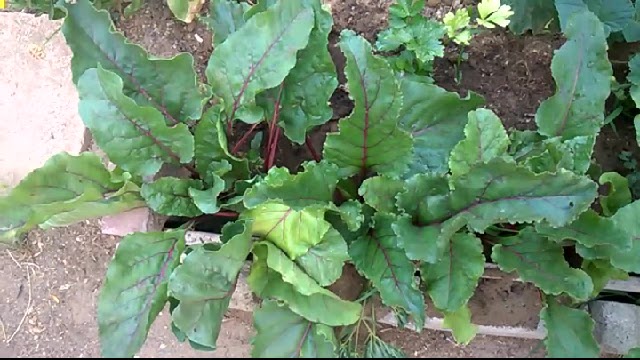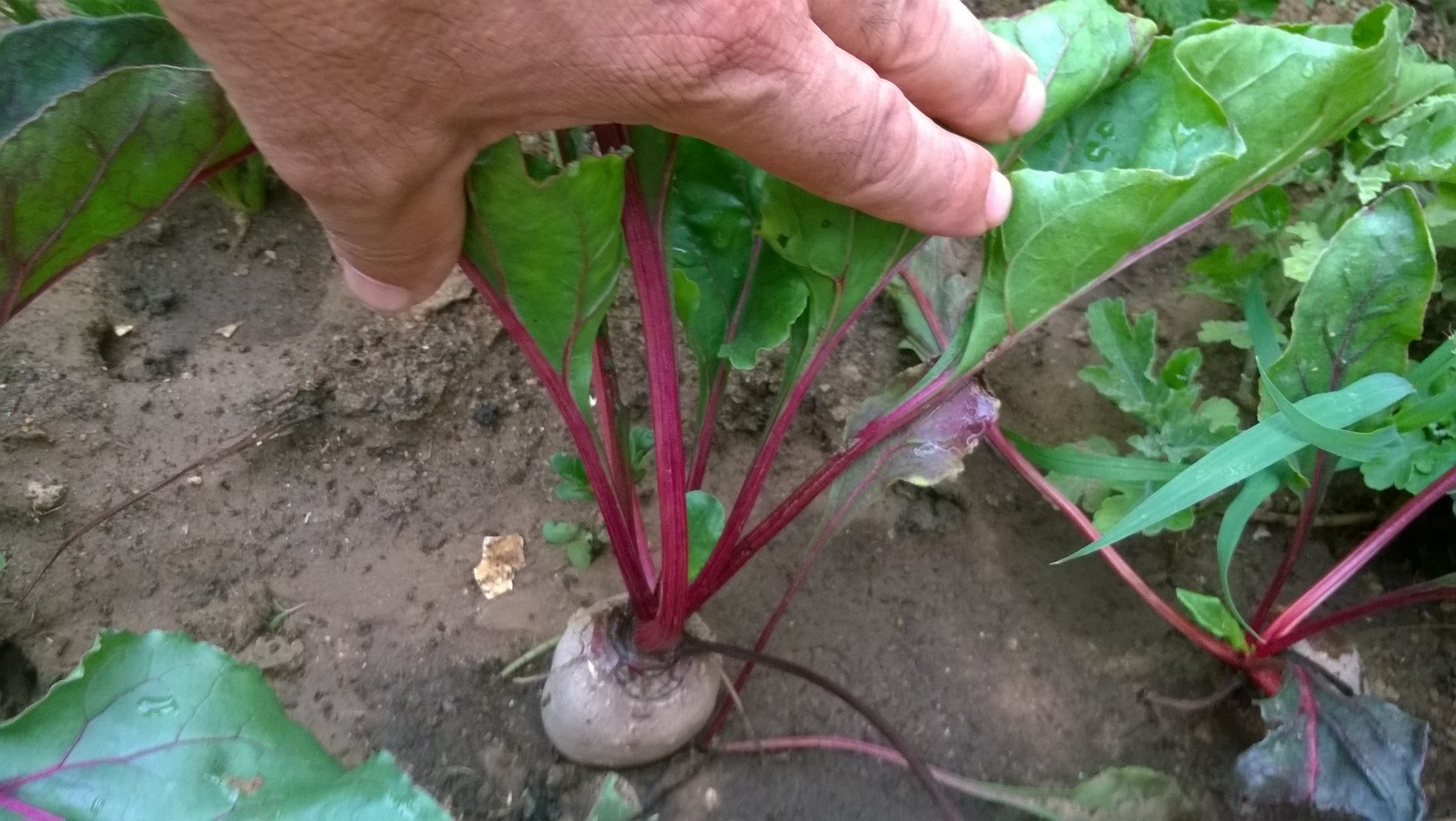History of Beetroot
The leaf, leaf stalks, and roots of beetroot plants are edible. The leaves are high in vitamin A and minerals including calcium, iron, potassium, and magnesium. Beetroots are high in magnesium and manganese, with some vitamin C. The leaves of beetroot plants can be used in salads but are more often prepared as a cooked green, or in soups . Beetroots are often cooked as a vegetable. The dark green leaves are quite attractive with their purple spine and veins and are also edible although the younger ones are the most tender.
The Main Active Ingredients of Beetroot
Carbohydrates: sucrose between 15 to 20%, glucose, fructose, other polysaccharides such as galactose, arabinose, pectin.
Amino acids: glutamine, asparagine.
Betaine {trimethylglycine}.
Volatile constituents: pyridine and geosmin.
Protein: 1.6%
Lipids: 0.2%
Vitamins: A, B, C and minerals.
Medicinal Properties of Beetroot:
The main beet benefits is remineralizing and vitamin tonic.
- Beet leaves are vulnerary, antiparasitic, digestive, laxative, antifungal and contraceptive.
- Fresh beets juice are attributed: antitumor, pectoral, diuretic, emmenagogue insecticide. Tubers: antifungal, antibacterial and anti-mitotic.
- Beets are packed with nutrients and goodness for your health. In fact, they are one of the best foods you can eat to increase the hemoglobin count in your blood.
- Beet tops are an excellent source of vitamin A and the roots are a good source of potassium, iron, vitamin C and dietary fiber, packed with antioxidants, these colorful root vegetables are making a healthy addition to plates and plots.
How to Grow Beetroot
Beetroot is one of the easiest vegetables you can grow, it is a cool-season crop and grow well in the cool temperatures of spring and fall. Beetroot although can handle warm temperatures once they're established. In a full sun location.
Soil Preparation:
The biggest keys to success in organic gardening is the condition of the soil.Choose a site that gets full sun and dig down deeply, to promote good root development. Your soil needs to be loose enough for good aeration and drainage, which will help promote strong root development.
Beets are not particularly heavy feeders, but like a bit of well-rotted manure or compost worked into the soil. Avoid using fresh manure or incomplete compost, as the beet roots will become bitter and hairy. Work the soil and compost together, removing any large rocks or old roots , loose soil to allows the beets free room to grow.
Watch How to Add Chicken Manure to The Garden Soil
Beets do best in deep, well drained soil, but never clay, which is too heavy for large roots to grow. Clay soil should be mixed with organic matter to help soften it. Hard soil can cause the roots of the beet to be tough. Sandy soil is best.
Sow beetroot seed from March to July. For early crops of small, delicious tender vegetables sow a bolt resistant variety like Pablo under cloches in early March. The variety you choose will depend on the look and flavor that appeals to you most!
Sow your beetroot seeds 2cm (3/4"-1") deep. Keep seeds at a distance of at least 5 to 10cm (2-4"). Water daily until the leaves begin to sprout. At the beginning, your seeds need plenty of water to start the germination process. Beetroot seeds are actually clusters of seeds which will produce 3 or 4 separate seedlings. Thin the new seedlings to leave the strongest otherwise the beets will be crowded and remain small. Once you have sprouts, only water them every 10-14 days in dry spells.
If you're succession planting, sow beetroot every 14 days for a continuous harvest. This is an easy alternative to succession harvesting.
If you plant beets in the fall, use a slightly heavier soil to help protect against any early frost. Remember that they can be grown all winter long in many southern states. In northern soils, beets shouldn’t be planted until the temperature of the soil is at least 40 F. (4 C.). Beets like cool weather. If you want to know when to plant beets, it’s best to plant them during cool weather. They grow well in cool temperatures in spring and fall and do poorly in hot weather.
Watch How To Sow Beetroot Seeds Video
Watch In My Garden Video "My Organic Beetroot"
Beets are biennials. Their first year of growth results in foliage and thick, fleshy roots, but the plants don’t produce flowers and set seed until their second year, if they survive the winter!
Best color and flavor develop under cool conditions and bright sun. When beets mature in warm weather, they are lighter colored, have less sugar and have more pronounced color zoning in the roots.
Beetroot Varieties:
There are several different varieties you may want to experiment with as you plan your spring and fall planting.
- Yellow and white beets tend to be sweeter and don't bleed red juice while cooking.
- Newer varieties may contain more sugar than you want in your diet. The older varieties will have less sugar than the newer hybrids.
- The Red Ace beet will produce tender greens for your salad, stores exceptionally well over the winter and is more heat resistant than other varieties.
- The Early Wonder Tall Top has a shorter growing season, cooks well and normally matures between 50 and 60 days.
- The Baby Ball variety grows as a perfectly rounded, petite beet with fine tips. The taste is mellow and produces delicious greens for your salad. It matures in about 50 days and is picked at a baby size.
Harvesting Beetroot:
Beetroot can be harvested at any stage of development, from the thinning to the fully mature stage at about 2 inches in diameter. The {thinnings} are beets that have been pulled from the ground prematurely to make room for others when rows are overcrowded. Thinnings can be eaten raw, in salads or roasted.Beetroots are at their sweetest and most tender when harvested young. Begin pulling them when the roots are about 2 inches in diameter. Most taste best before they reach 3 inches in diameter. All parts of beet plants are edible. The young green tops are delicious steamed.
If you wish to harvest the tops before the roots are ready, do so selectively, taking only a few leaves from each plant so that the root can continue to grow.
- To harvest beets, pull the root from the ground.
- Cut the tops off approximately 1-2 inches above the root to prevent color bleed and loss of moisture.
- Wash the beets well in cool water. At this point they can be stored in a cool location for several months.
Watch How to Harvest Beets Video
If all the beets are not used, pull them and place in a compost pile or spade them into the soil.
Health Benefits of Beetroot Juice:
Red beetroots have been ranked as one of the 10 most potent antioxidant vegetables and are also one of the richest sources of glutamine, an amino acid, essential to the health and maintenance of the intestinal tract.
Research shows drinking beetroot juice may benefit your health and beetroot juice is low in calories and has many vitamins and minerals in it.
1: Drinking beetroot juice increases plasma nitrate levels and boosts physical performance.
2: Beetroot juice may help lower your blood pressure.
3: Straight beetroot juice is low in calories and has virtually no fat. It’s a great option for your morning smoothie to give you a nutrient and energy boost as your start your day.
4: Beetroot juice is a good source of vitamin C. Vitamin C is an antioxidant that helps boost your immune system and protect cells from damaging free radicals.
5: There are many benefits of beetroot juice for skin. Beetroot juice can work on your skin in either way. It’s a powerhouse of antioxidants which can scavenge free radicals and keep your skin young, glowing and problem free.
If you decide to add beetroot juice to your diet, take it easy at first. Start by juicing half a small beetroot and see how your body responds. As your body adjusts, you can drink more. Juicing beets is a superior way to enjoy them because cooking beets reduces their nutritional profile. But If you don’t like beetroot juice straight up, try adding some apple slices, mint, or citrus to cut through the earthy taste.
Beetroot Pests and Diseases
Insects: Flea beetles, leafminers, and aphids may attack the beet leaves, but should not affect the roots.
Diseases: Certain leaf spot disease may affect beets. To avoid problems, grow them in full sun with good air circulation and remove any infected leave.
The best prevention against disease and pests is a strong healthy plant, growing in well-drained, well-weeded soil. Excessive humidity and lack of air circulation may lead to diseases . Keep the foliage dry and improve air circulation by removing weeds and thinning out crowded plants. Rotate your crops around the garden from year to year. Plant marigolds around the garden. Marigold roots release a chemical that kills nematodes.
Companion Planting For Beets
Beets thrive when planted near bush beans, soybeans, butter beans, cauliflower, broccoli, kale, peas, Brussels sprouts, kohlrabi, leeks, scallions, onions, garlic, mint, summer savory, borage, and Swiss chard. Mint all so is a helpful companion plant for beets and keeps away flea beetles, cabbage moths, fleas and even rodents with its strong scent.
Beets are probably one of the most appreciated vegetables by most gardeners. So grow them and enjoy all the healthy benefits that they can offer!
Beet Seeds are available HERE!
Want to read more:
Happy Organic gardening!
This web site is a participant in the Amazon Services LLC Associates Program, an affiliate advertising program designed to provide a means for sites to earn advertising fees by advertising and linking to amazon. Some of the links to products on this site are affiliate links. These are products that I've used or recommend based from homesteading experience. I do make a small commission (at no extra cost to you) from these sales.(alert-warning)





